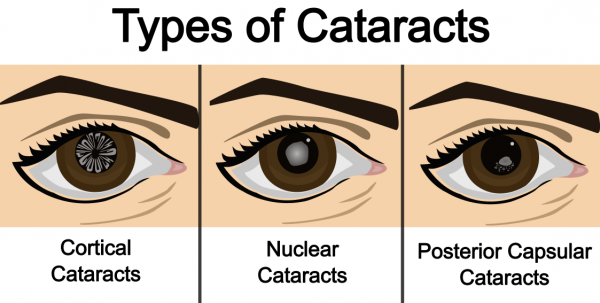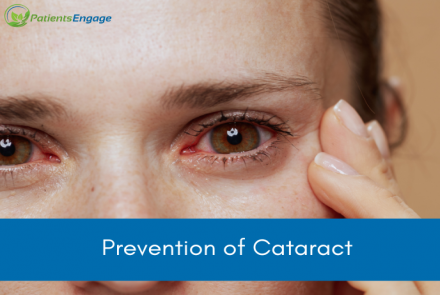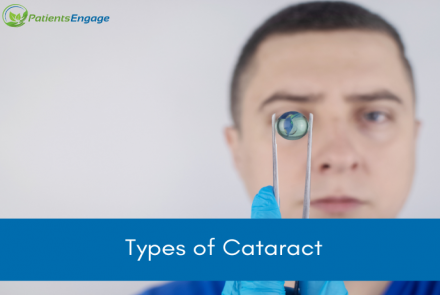Cataracts, including congenital cataracts are relatively common in India. According to World Health Organisation (WHO), cataracts are a leading cause of blindness and visual impairment in India. It is estimated that >50% of the blindness cases in India are caused by cataracts. Cataracts can affect people of all age groups, but they are most commonly associated with aging, especially after the age of 50. However, cataracts can also occur in younger age groups, including children and middle-aged adults. Congenital cataracts, are present at birth or develop shortly after birth during infancy.

There are several different types of cataracts, which are classified based on their location within the eye or the underlying cause.
Based on the cause, cataracts could be classified as:
- Age-related Cataracts: These are the most common type of cataracts and develop as a result of natural aging processes. They typically occur in individuals over the age of 50 and progress gradually over time.
- Congenital Cataracts: Congenital cataracts are present at birth or develop shortly after birth during infancy. They can be caused by genetic factors, intrauterine infections, metabolic disorders, or certain medications taken during pregnancy.
- Secondary Cataracts: Secondary cataracts can develop as a result of other eye conditions or systemic diseases. They may occur following uveitis, infections of the eye, certain eye surgeries, diabetes or use of certain long term medications.
- Traumatic Cataracts: Traumatic cataracts develop as a result of an eye injury or trauma. The impact can cause damage to the lens, leading to cataract formation.
|
Congenital cataracts
Congenital cataract refers to a cataract that is present at birth or develops shortly after birth during infancy. It can affect one or both eyes. Congenital cataracts can occur due to genetic factors, intrauterine infections, metabolic disorders, trauma, or certain medications taken during pregnancy.
The treatment of congenital cataracts depends on various factors such as the size and location of the cataract, its impact on vision development, and the overall health of the child. If the cataract obstructs vision or causes visual deprivation, early intervention is necessary to prevent vision impairment or amblyopia (lazy eye). However, in some cases, congenital cataracts may not significantly affect vision and may not require immediate treatment.
The primary treatment for congenital cataracts is surgery that involves removing the cloudy lens and, in most cases, implanting an intraocular lens (IOL) or providing corrective glasses or contact lenses to help restore clear vision. The timing of surgery depends on the specific circumstances and the judgment of the ophthalmologist.
Following surgery, it is important for the child to undergo visual rehabilitation, which may involve glasses or contact lenses, occlusion therapy (patching the unaffected eye to encourage vision development in the affected eye), and vision therapy exercises to promote proper visual development and maximize visual potential.
The prognosis for congenital cataracts depends on various factors, including the size and location of the cataract, the timing of treatment, and any associated conditions. Early diagnosis, timely intervention, and appropriate management can significantly improve the visual outcomes for children with congenital cataracts. Regular follow-up visits with an ophthalmologist are essential to monitor the child's vision and provide ongoing care.
|
Based on the location, cataracts can be divided into:
- Nuclear Cataracts: Nuclear cataracts affect the central portion (nucleus) of the lens. They typically develop in the centre of the lens and cause gradual yellowing or browning of the lens nucleus. Nuclear cataracts can result in near-sightedness and difficulty seeing in dimly lit environments.
- Cortical Cataracts: Cortical cataracts are characterized by wedge-shaped opacities that start in the periphery of the lens and extend toward the centre. They often have a spoke-like appearance and can cause visual disturbances, such as glare and reduced contrast sensitivity.
- Posterior Subcapsular Cataracts: Posterior subcapsular cataracts form on the back surface of the lens, just beneath the lens capsule. They can develop more rapidly than other types of cataracts and often cause glare, halos, and blurred vision, especially in bright lighting conditions.

Contributed by
Dr Rashmi Deshmukh
Consultant Ophthalmologist, Cataract, Laser Refractive Surgery (LASIK)
L V Prasad Eye Institute
Condition















